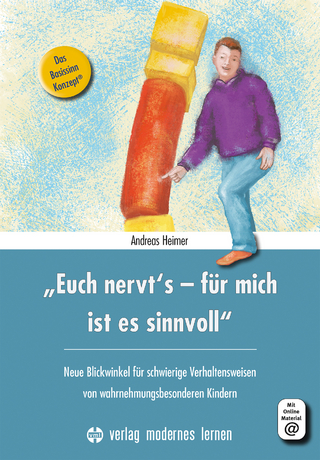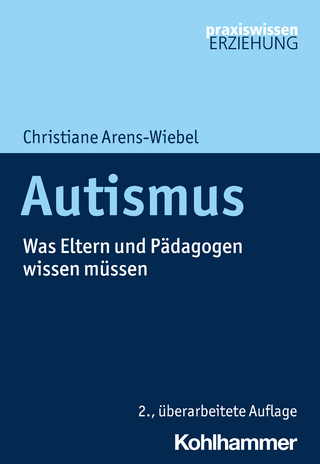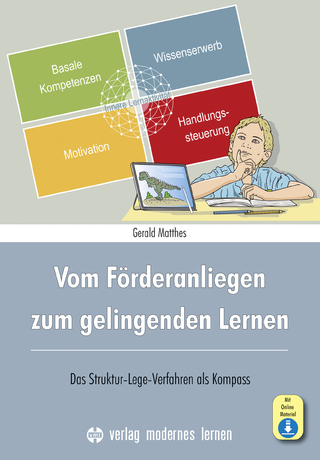
But What Do I DO?
Corwin Press Inc (Verlag)
978-1-5063-5115-5 (ISBN)
Identifying appropriate strategies for instruction or intervention made easy!
Selecting individualized and evidence-based interventions for struggling students can overwhelm even the most experienced teachers. Save time and get the help you need with this comprehensive guide from an expert in special education and cultural differences! Organized around an alphabetized and cross-referenced list and including an online selection grid featuring more than 150 PBIS, RTI, and MTSS interventions, you’ll quickly find the tools to resolve specific learning and behavioral challenges. This must-have resource helps you effortlessly locate appropriate strategies based on student needs and desired learning outcomes.
Teachers, counselors, and instructional intervention teams will learn to
Meet the needs of all your struggling students including at-risk, culturally and linguistically diverse, as well as those with IEPs
Progress monitor, document, and modify instructional strategies
Identify specific interventions for distinct learning and behavior problems, including many reading, writing, math, and attention strategies
Implement classroom-wide, small group, or individualized interventions
Use classroom-based data to guide decision making
Implement in a variety of settings, including special education, learning assistance programs, and full-inclusion
Including implementation checklists, examples of every strategy as well as its research base, and graphic organizers, use this book to discover the what, why, and how to help each student achieve success!
Learn more about Catherine Collier′s PD offerings Catherine Collier, Ph.D. has over 45 years experience in equity, cross-cultural, bilingual, and special education. Dr. Collier is a nationally recognized expert on diverse learners with learning and behavior needs. She established and directed the Chinle Valley School, Dine Bitsiis Baa Aha Yaa, bilingual services for Navajo students with severe and multiple disabilities for the Navajo Nation. She was the director of a teacher-training program, Ikayurikiit Unatet for the University of Alaska for seven years, preparing Yup’ik Eskimo paraprofessionals for certification as bilingual preschool, elementary, and special educators. She was an itinerant (diagnostician/special education) for Child Find in remote villages in Alaska. For eight years, Dr. Collier worked with the BUENO Center for Multicultural Education, Research, and Evaluation at the University of Colorado, Boulder, where she created and directed the Bilingual Special Education Curriculum/Training project (BISECT), a nationally recognized effort. She is active in social justice activities for culturally and linguistically diverse learners and families. She started the first bilingual special education programs for the Navajo Nation and the White Mountain Apache. She is currently the director of the national professional development project Curriculum Integration for Responsive, Crosscultural, Language Education (CIRCLE) at Western Washington University. She works extensively with school districts on professional and program development for at-risk diverse learners. Dr. Collier provides technical assistance to university, local, and state departments of education regarding programs serving at-risk cognitively, culturally and linguistically diverse learners. She works with national organizations to provide professional development in the intersection of crosscultural, multilingual, diversity, special needs issues in education.
Preface
Acknowledgments
About the Author
Introduction
A
Academic Language Transition
Accountability
Active Processing
Advanced Organizers
Alternate Response Methods
Analogy
Assessment
B
Belonging
Bilingual Aide
Bilingual Peers
Bilingual Texts
Building Connections
Building Connections—Reading Strategy
C
CAN-DO—Retention Strategy
Choices
Chunking
Class Buddies/Peer Helpers/Peer Tutors
Class Contracts
Classroom and School Survival Strategies
Cognitive Content Picture Dictionary
Cognitive Strategies in Home and Community Language
Concurrent Language Development/Acquisition Sessions
Consequence Wheel
Consistent Sequence
Content Language Games
Content Modification
Context Embedding
Contracting
Control and Attention Strategy—STAR
Cooperative Learning Strategies
Coping/Problem Solving
COPS—Writing Strategy
Cross-Cultural Communication Strategies
Cross-Cultural Counseling
D
DEFENDS—Writing Strategy
Demonstration
Differentiation
Double-Entry
E
EASY (Reading Comprehension)
Embedding
Entry Points
Evaluation
Expectations Awareness/Review
Experience-Based Learning
Exploration—Inquiry Technique
Exploration Team
F
Family-Centered Learning Activity
Fifty Grid (Math)
FIST—Reading Strategy
G
Graphic Organizers
Guided Lecture Procedure
Guided Memories—Personal Timelines
Guided Practice and Planned Interactions
Guided Reading and Writing in Home and Community Language
H
Home Activities
I
Individualizing
Information Organization—EASY
Inquiry Charts
Inquiry Technique
Interdisciplinary Unit/Thematic Instruction
Inverted Pyramid—Writing Strategy
J
Jigsaw—Comprehension Strategy
Jumping to Conclusions—Comprehension Strategy
K
Krypto—Math Strategy
KWL+
L
Language Games
Learning Centers or Stations
Learning Styles (Entry Points)
Leveled Activities
Listening Comprehension—TQLR
M
Magic Bag—Sorting
Manipulatives
Marking Text
Math Strategy—Fifty Grid
Math Strategy—KRYPTO
Math Strategy—SQRQCQ
Mediated Stimuli in Classroom
MET Expectations
Mind Mapping
Modeling
O
Observation Charts
Oral Discussions
Organization—Sorting
P
Paraphrasing—RAP
PARS—Retention Strategy
Participant Collage
Partners—Reading Strategy
PEARL
Peer/School Adaptation Process Support
PENS—Writing Strategy
Personal Timelines
Picture This!
PIRATES—Test Taking Strategy
Planned Ignoring
Planned Movement
Positive Reinforcement
PQ4R—Reading Comprehension
Prompting
Proof Reading—COPS
Proximity—Proximics
Q
Questioning
Quick Write
R
RAP—Paraphrasing
Reading Comprehension—PQ4R
Reading Comprehension—SQ3R
Reading Strategy—FIST
Reading Strategy—Partners
Reading Strategy—RIDER
Reading and Writing Strategy—SSCD
Reading Strategy—Visualization
Reality-Based Learning Approaches
Reduced Stimuli
Reciprocal Questioning
Retention Strategy—CAN-DO
Retention Strategy—PARS
Rest and Relaxation Techniques
RIDER—Reading Strategy
Role-Playing
S
Scaffolding
SCORER—Test Taking Strategy
Self-Concept Activities
Self-Monitoring Techniques
Self-Reinforcement
Sheltered Instruction
Shortening Student Assignments
Signals
Sorting
SQ3R—Reading Strategy
SQRQCQ—Math Strategy
SSCD—Reading and Writing Strategy
STAR—Control and Attention Strategy
Story Star—Reading Comprehension Strategy
Student Input
Success
Survival Strategies for Parents/Families
Survival Strategies for Students
T
Test-Taking Strategy—PIRATES
Test-Taking Strategy—SCORER
Time-Out
Total Physical Response—TPR
Touch
TOWER—Writing Strategy
TPR—Total Physical Response
TQLR—Listening Strategy
U
Use of First Language
V
Varied Grouping
Videos About Interaction Patterns
Visualization—Reading Strategy
Visualization Strategy—RIDER
Vocabulary Pyramid
W
Wordless Picture Books
Writing Strategy—COPS
Writing Strategy—DEFENDS
Writing Strategy—Inverted Pyramid
Writing Strategy—PENS
Writing Strategy—TOWER
W-Star—Reading Comprehension Strategy
References
Index
| Erscheinungsdatum | 07.12.2016 |
|---|---|
| Verlagsort | Thousand Oaks |
| Sprache | englisch |
| Maße | 215 x 279 mm |
| Gewicht | 880 g |
| Themenwelt | Sozialwissenschaften ► Pädagogik ► Sonder-, Heil- und Förderpädagogik |
| ISBN-10 | 1-5063-5115-8 / 1506351158 |
| ISBN-13 | 978-1-5063-5115-5 / 9781506351155 |
| Zustand | Neuware |
| Haben Sie eine Frage zum Produkt? |
aus dem Bereich


